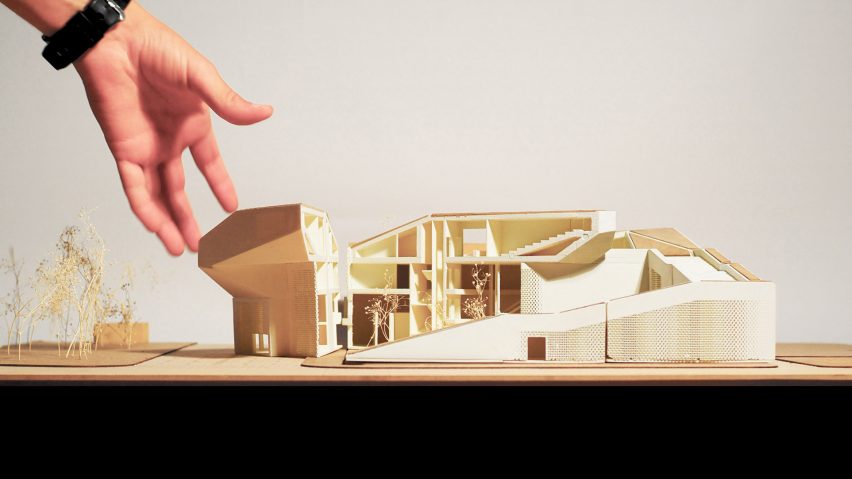
Woodbury University spotlights ten student design projects
Dezeen School Shows: a wellbeing centre based on a poem about grief and an algorithmic programme that dictates the design of knitted jumpers are included in Dezeen's latest school show by students at Woodbury University.
Also featured is a connected series of dwellings that each cater towards a different user group with distinct sets of needs and an adaptive reuse scheme for a theatre.
Woodbury University
Institution: Woodbury University
School: School of Architecture
Course: Architecture, Interior Design, Applied Computer Science-Media and Art
Tutors: Aaron Gensler, Branka Olson, Arash Soleimani, Cody Miner, Ismaelly Pena, Kishani De Silva, Yelen Aye, Matthew Ridgeway, Lara Hoad, Todd Erlandson, Randy Stauffer and Eric Olsen
School statement:
"Our carefully crafted architecture programme is designed to empower our students to impact the future of the profession through meaningful built work.
"We aim to transform our students into ethical, articulate and innovative design professionals prepared to lead and practice in a world of accelerating change.
"We imagine a world in which there are no disciplinary rights or wrongs, where diverse and sometimes contradictory values collide to generate new ideas, design innovation, unexpected practices and the means to expand the influence of our discipline.
"The Interior Design programme at Woodbury University focuses on the idea that good design is human-centred.
"Woodbury Interior Design graduates affirm the power of design to improve individual and communal built interior environments in a world of accelerating technological and social change.
"Situated in the School of Architecture, the Interior Design Program instills the human experience into professional knowledge and interdisciplinary collaboration to prepare graduates to address real-world problems that positively affect the human condition using holistic design thinking methods."
Teeth by Premsirin Sangngeonon
"This project, which I have called 'Teeth' intervenes in the existing grid of downtown Detroit by developing the Detroit Performance of Art Center.
"On a site primarily dominated by parking lots, this new facility provides a new theatrical hub in Foxtown – a theatre district in Detroit.
"The interlocking segments of the building complex recall industrial components of joinery, exploring a contextual relationship between project and city."
Student: Premsirin Sangngeonon
Course: ARCH 587/Graduate Studio 3
Tutor: Cody Miner
Email: premsirin.sangngeonon[at]woodbury.edu
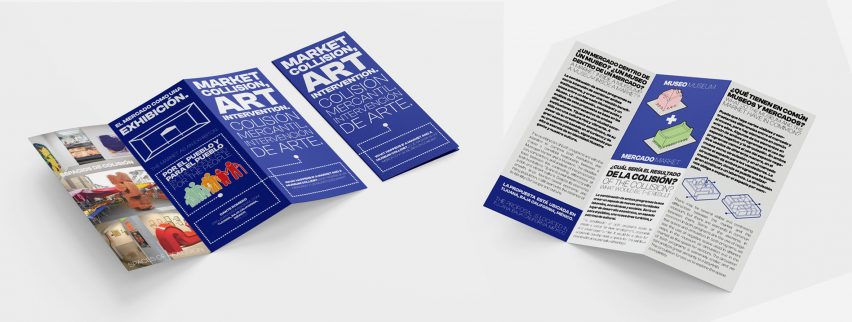
Market Collision, Art Intervention by Dante Romero
"This proposal aims to combine two contrasting programme – a museum and municipal market – to create an institution that advocates for social and economic development.
"The scheme also celebrates the cultural heritage of Tijuana by enhancing public space as well as creating economic opportunities and a new tourist destination.
"This is manifested through negative space, complex circulation, colour and scale to highlight the rich rhythms, noises, smells, cost, textures and colour of the existing diverse typologies."
Student: Dante Romero
Course: ARCH 402/Studio 8
Tutor: Ismaelly Pena
Email: dante.romero[at]woodbury.edu
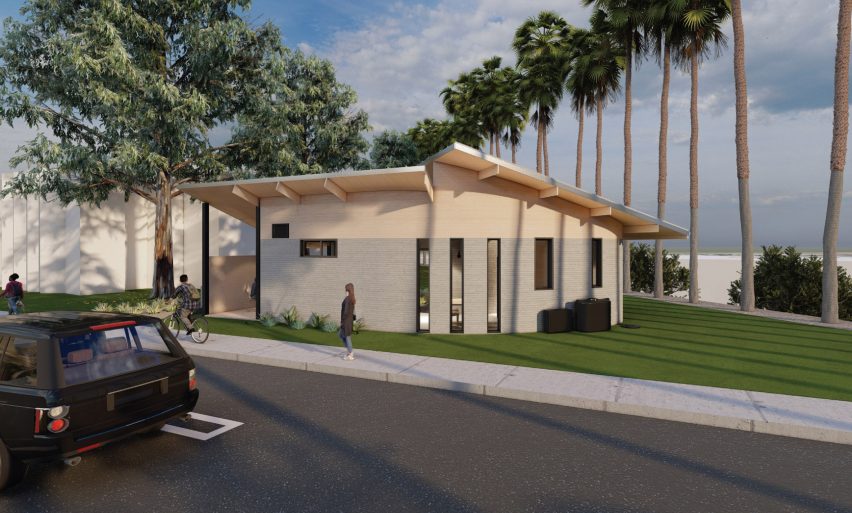
Group project: Solar Futures
"The Woodbury cohort, comprised of students, professors and industry partners has designed an entry for the 2023 US Department of Energy (DOE) Solar Decathlon.
"The brief was to design a versatile micro-unit dwelling that can be configured for a range of inhabitants – from young and emerging professionals – keen on micro footprints and housing for senior citizens, to low-income individuals, homeless persons and people whose housing situations are insecure.
"The proposal addresses the following challenges: challenge one is designing for a changing climate, challenge two is designing affordable housing and challenge three is designing for people with housing insecurity.
"You can follow the project here."
Students: Abraham Rivera, Adrian Moreno, Angela Ponce, Argin Hayrusians, Artem Grigoryan, Ashley Gomez, Austin Barcelona, Bailey Bestul, Brenda Vasquez-Meza, Chantal Godinez, David Petrosyan, Giselle Yeh, Gregor Kuchakhchian, ,Jade Royer, Jessica Gomez, Jorge Ruiz Rosales, Karin Najarian, Long Ngu, Mahmoud Hassan, Miguel Gonzalez, Polaris Bird, Rafael Aguilar, Roni Hayroomian, Sergio Santos and Kayla Castro
Course: ARCH 430/ Studio 9
Tutor: Kishani De Silva and Hector Rodriguez
Digital Model for Design Communications by Neil Eiklor
"The brief for this project was to create a digital model of an existing structure and design an adaptive reuse scheme for the interior space.
"In this project, the outboard motor repair shop on the Oregon coast is transformed into a waterfront coffee shop.
"The emphasis is on showcasing the structure, materiality and nautical theme of the existing building, while taking advantage of its setting, views and natural light.
"An observation deck is added to allow the visitors to experience the beauty of the Oregon river delta and the Pacific ocean beyond.
"Eiklor uses virtual reality and animation software to enable the viewer to enjoy the full experience of the approach, interior walk-through and exterior views of the project."
Student: Neil Eiklor
Course: IDES 211/Design Communications 3
Tutor: Yelen Aye
Email: neil.eiklor[at]woodbury.edu
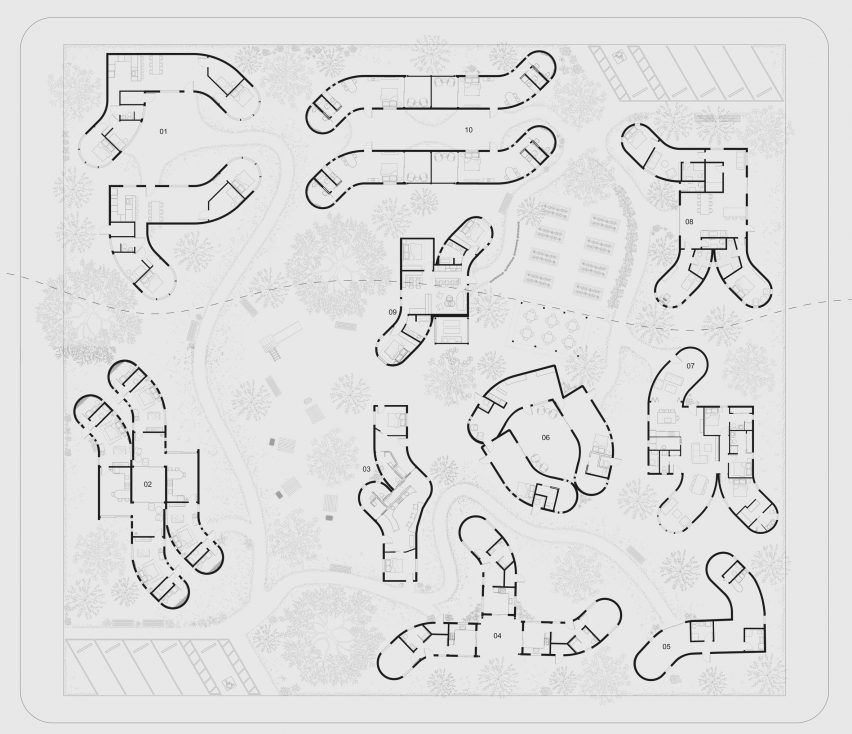
Group project: Solar Decathlon
"As part of the dwelling studio, the interior design students researched specific user groups and designed the interior of a unit to reflect the individual needs of their residents.
"Students first conducted analysed research to develop a thesis that makes a claim concerning the design of domestic space. Working through text, visual representation and verbal discourse, students developed a critical position that informed their design.
"In developing their proposals, the students closely examined the logics of the unit. They were allowed to subtract from the unit and add one unit to another, but they were not allowed to propose new walls outside of the footprint.
"The units could remain individual or have shared interior spaces. Students were expected to foreground opportunities to share building services, structure and common spaces.
"Finally, students proposed an intersectional 'village' of units, representing dwelling as a collective action that requires collaboration and community. Follow the project here."
Students: Havanna Hurtado, Kassea Yuu, Cameron Clarke, Hind Alqahtani, Hidah Muringai, Arina Skokova, Seda Avetisyan, Claudia Aydinian, Marina Bushka and Mellany Campos
Course: IDES 363/Studio 5 – Dwelling
Tutor: Matthew Ridgeway
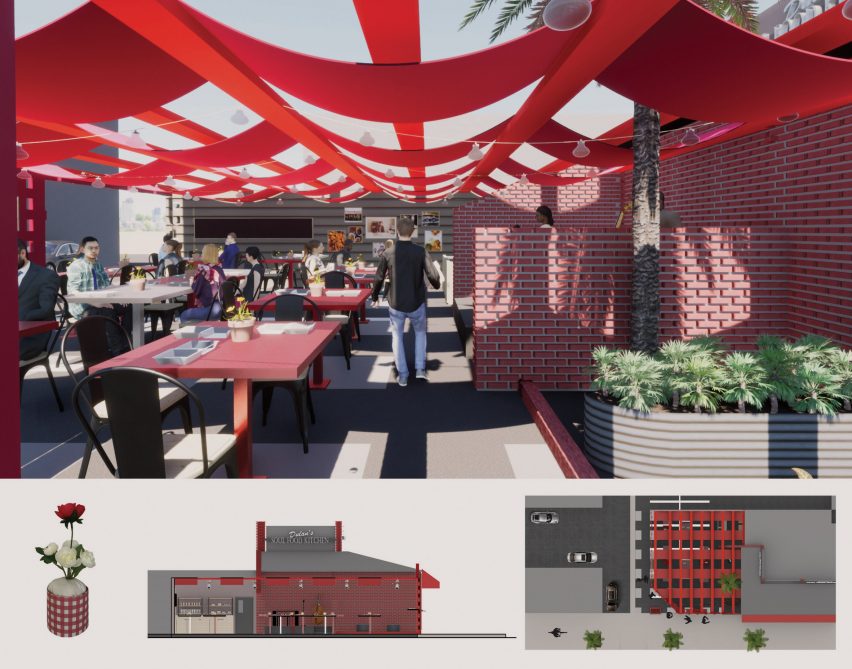
Inside-Out by Alex Salas
"During the height of Covid-19 pandemic restrictions, many of the small business in underserved neighbourhoods of LA were in danger of closing.
"The interior design branding studio – with a grant from the Donghia Foundation – worked with select establishments located in LA's Inglewood neighbourhood to use sidewalks, alleyways and parking spaces to design outdoor venues.
"Leveraging design thinking and problem-solving techniques, the students collaborated with the business owners to determine how their operations and interior spaces could quite literally be turned inside-out
"These businesses also worked with students to see how their spaces could be converted into functional and Covid-19-safe exterior environments, while preserving their unique personalities, characteristics and brand touchpoints.
"Salas worked with Dulan's Soul Food Kitchen, a welcoming space that invites patrons to experience generations of southern cooking.
"Salas personalised the outdoor experience while creating a functional outdoor venue and broadened the understanding of the owner of what is possible to achieve through design."
Student: Alex Salas
Course: IDES 382/Design Studio 6
Tutors: Lara Hoad and Todd Erlandson
Email: alex.salas[at]woodbury.edu
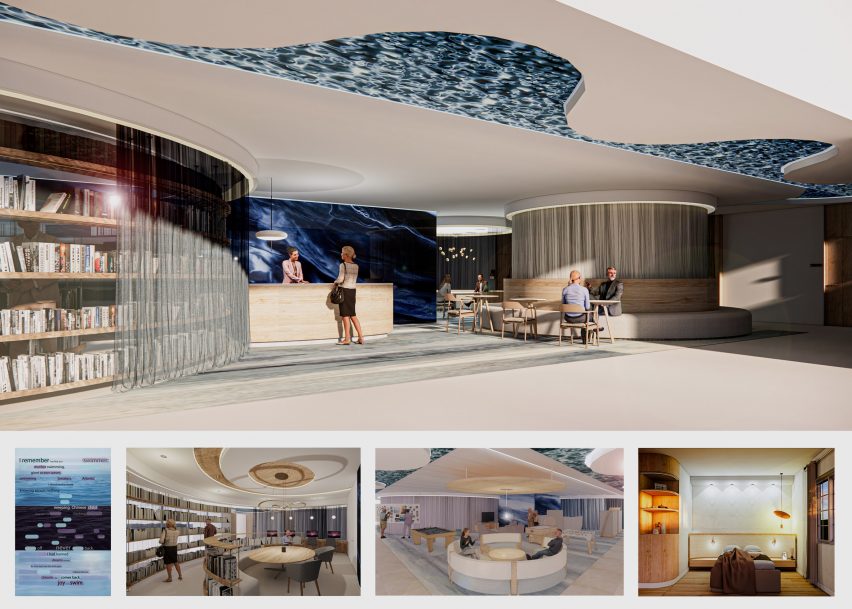
The Swimmer by Hongseon Ju
"Human wellbeing is not created through an isolated design decision but a fully integrated and universal design process.
"In this class, the students were asked to design and develop an assisted living facility in a 14,000-square-foot existing, single-story building in a residential neighbourhood of Austin, Texas.
"Ju's assisted living facility was inspired by the poem The Swimmer by Adam Lindsay Gordon. The poem centres on three phases of a person's state of being – memory, loss and reconciliation.
"The spatial experiences are designed to reflect the three phases of grief described in the poem. The assisted living facility is designed for individuals who have lost their partner and can no longer perform daily tasks.
"It offers medical treatments, a supportive community for sharing their grief and loss, and various activities to enable them to continue with their lives."
Student: Hongseon Ju
Course: IDES 480/Design Studio 7 - Wellbeing
Tutor: Randy Stauffer
Email: hongseon.ju[at]woodbury.edu
Identifying Patterns in Primes with Generative Algorithms by Levi Ellis
"Applied computer science student Levi Ellis developed a script that visualises the prime placement pattern as a fractal using a binary translation system.
"The script creates a ruleset informed by user-inputted parameters which is fed into a Lindenmayer growth simulator.
"Through various generative processes utilising L-systems, Ellis created unconventional visual representations of the chaotic placement of prime numbers throughout the natural number line.
"After running simulations at eight levels of iterative magnification, Ellis found that the seemingly randomised placement of prime numbers throughout the natural number line can form an intricate, repeating fractal."
Student: Levi Ellis
Course: Media Programming 2 (CSMA 302)
Tutor: Arash Soleimani
Email: levi.ellis[at]woodbury.edu
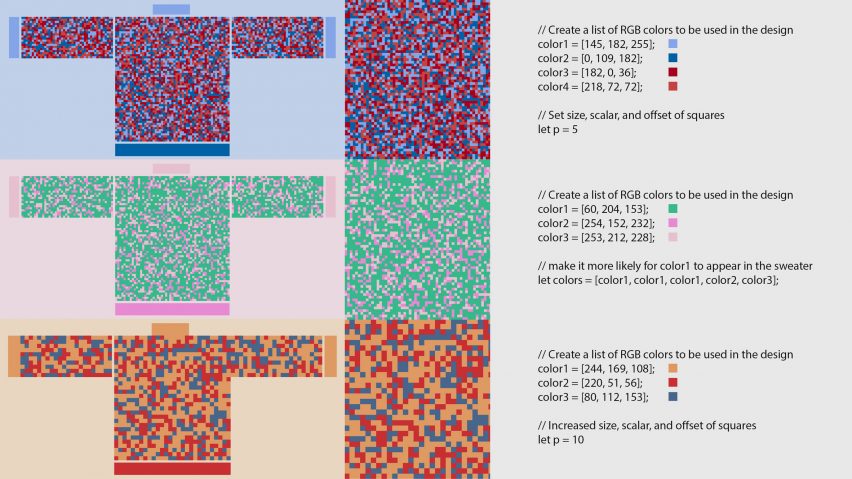
Algorithmic Knitting Design: A Generative Approach to Fashion Design by Emanuel Nation
"This project combines the realms of programming and fashion using an algorithm made in p5.js that generates a digital pattern for knitted sweaters.
"Patterns are made up of seven sections: body, left and right sleeves, left and right cuffs, collar and bottom hem.
"Several for loops determine the size and location of each section, placing different coloured squares next to each other until the designated section is filled.
"Users can decide which colours are used by inputting RGB values into an array. No more than six colours can be used to adhere to colour limitations set by a knitting mill."
Student: Emanuel Nation
Course: Media Programming 2 (CSMA 302)
Tutor: Arash Soleimani
Email: nationemanuel[at]gmail.com

Evolution LA Film Archive by Jorge Cerdo Schumann
"Evolution LA Film Archive is an adaptive reuse project broken down into two elements – the existing theatre building and a new form that wraps around the perimeter of the site.
"The latter serves as a mode of circulation, enhancing its surrounding environment using passive design system that reacts to the winter and summer solstices as well as prevailing winds.
"The overall form also creates a very valuable negative space in the form of a plaza with a large seating area facing one of the existing walls, to be used for outdoor movie projections.
"While the building reads as a monolith, it is composed of a unique angled cinder block façade that strategically allows natural light into the spaces.
"The building is an extension of the ground, wrapping around the old theatre and only allowing the original facade to show in certain spaces, creating a pronounced seam between old and new."
Student: Jorge Cerdo Schumann
Course: ARCH 401/Studio 7
Tutor: Eric Olsen
Email: jorge.cerdoschumann[at]woodbury.edu
Partnership content
This school show is a partnership between Dezeen and Woodbury University. Find out more about Dezeen partnership content here.